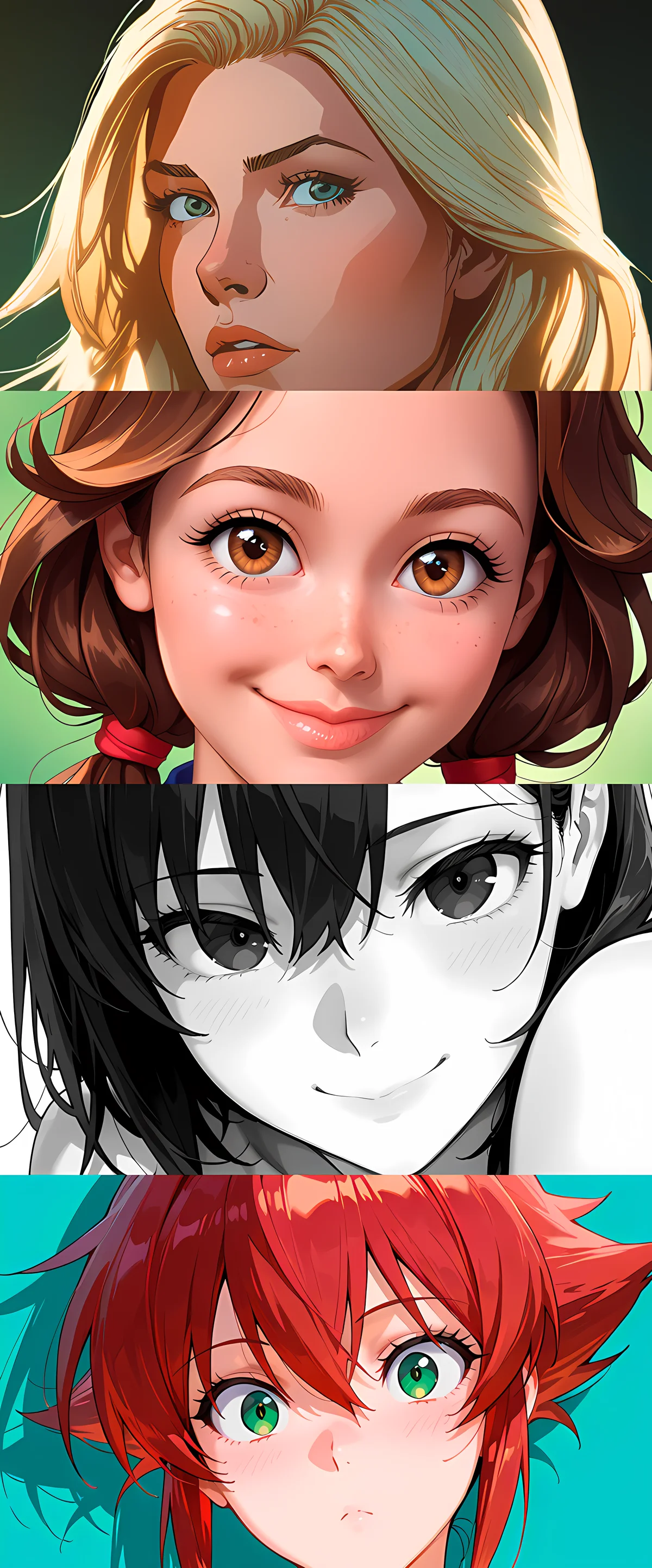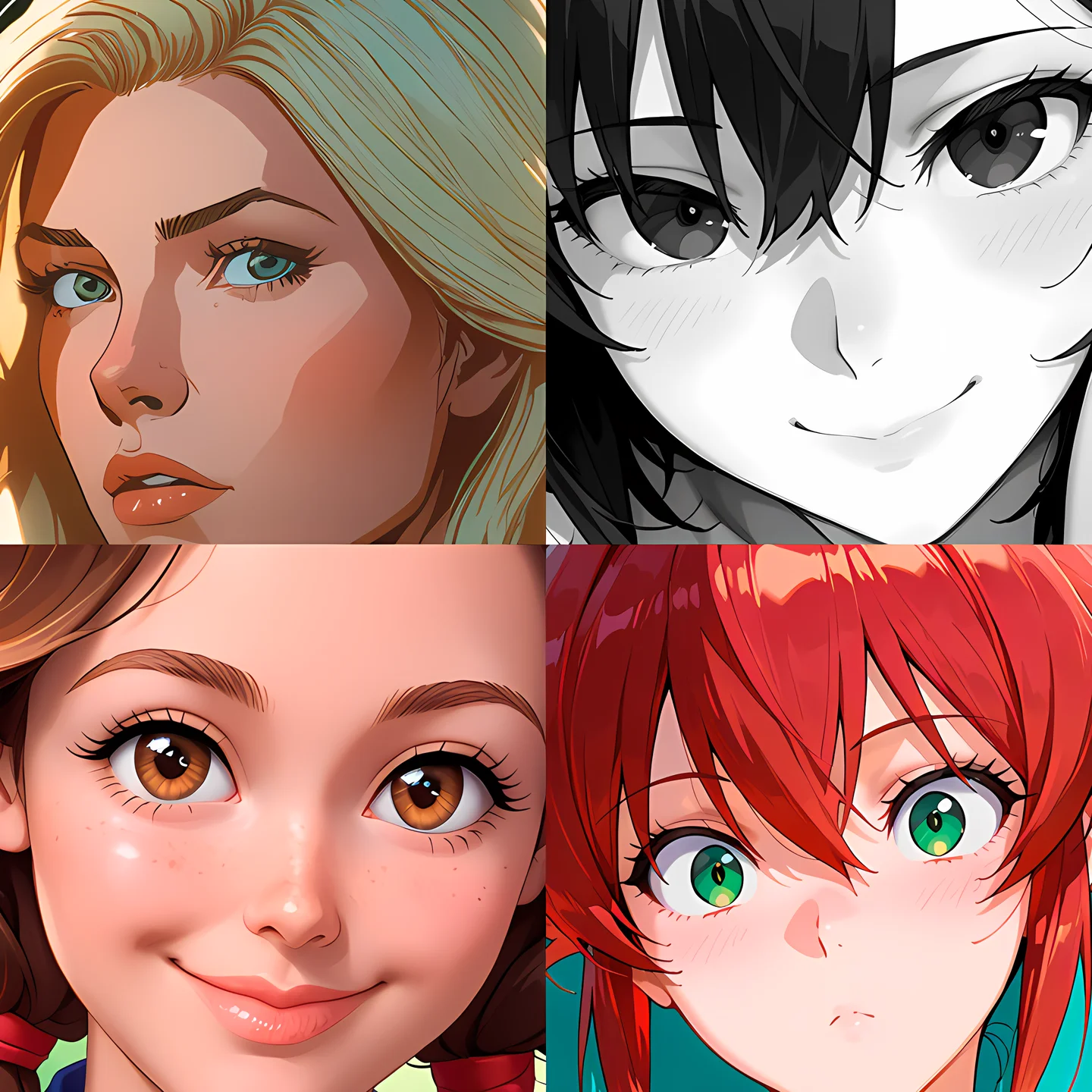

Graphic story originating from the West, especially countries like the United States and France. It is told through sequential panels with illustrations accompanied by text in speech balloons and narrative boxes. It is read from left to right and is usually in color. Often published in magazines, volumes, or issues. Most popular genres include superheroes, science fiction, and adventure. Well-known examples: Spider-Man, Batman.
Japanese comic with its own visual and narrative style. Generally in black and white, although special color editions exist. It is read from right to left (both pages and panels). Covers a huge variety of genres and audiences, from action to romance or horror, and can be aimed at children, teens, or adults. Well-known examples: Attack on Titan, One Piece.
Korean comic that differs from manga by being read left to right, like Western comics. Most are in color, especially if published digitally. Often released online first before coming to print. Stories also cover many genres and audiences. Notable example: Solo Leveling.
Digital comic specifically designed to be read on mobile phones via vertical scrolling. Originating in South Korea, usually fully colored and features a modern, dynamic visual style. Many webtoons are released in weekly installments, and some have been adapted into series or animations. Known example: Tower of God.
Short, fast-paced novel originating from Japan. Uses simple and direct language and usually includes manga-style illustrations every few chapters. Often aimed at a young audience and many have been adapted into anime, manga, or video games. Popular examples: Re:Zero, Sword Art Online.
Novel published in chapters on digital platforms. Very common in countries like Japan, South Korea, and China. Often released for free or via subscription, and many times written in real time with feedback from the audience. Several successful web novels are later adapted into manga, manhwa, or anime.
Narrative video game with a strong focus on text and story. Combines illustrations, music, sound effects, and in many cases, decision-making by the player, which can alter the course of the plot. The style is usually similar to anime and many have multiple endings. Iconic examples: Steins;Gate, Clannad.
An ultra-light novel is an extremely short narrative that condenses the full structure of a novel —characters, conflict, arc, and climax— into less than 300 words, sometimes even a single sentence. Unlike microfiction, it aims to convey a complete universe in its minimal form, with immediate impact and implicit depth.

(Ultra-Light Graphic Novel) is a simplistic visual narrative format that can be applied to any medium. It focuses on short, impactful, and visually minimal stories. Without fixed rules, it allows total creative freedom, integrates artificial intelligence as a tool, and is ideal for emerging creators.
(Ultra-Light Web Graphic Novel) is a new narrative format adapted to the digital age. It is read in vertical format (but not necessarily) and offers short, visual, and accessible stories with no rigid rules. It encourages creative freedom, modular publishing, and the use of artificial intelligence. Its goal is to revitalize reading in an era of instant dopamine without compromising quality, promoting a light, modern, and evolving narrative.
The major problem in industries like film, video games, and anime is their reliance on million-dollar budgets to produce content. Paradoxically, many of these works turn out to be mediocre, recycled, and soulless. Writers' strikes reflect fear, not quality. How can high salaries be justified for increasingly worse products? They demonize artificial intelligence, when it might actually be the opposite: the tool to optimize resources, cut costs, and rescue true art without sinking further into this decline.
In one corner of this digital revolution, an image says it all: a clumsy sketch is transformed, thanks to artificial intelligence, into a visually striking character. This tool opens the door for anyone to create comics, manga, or light novels without depending on absurd budgets or sacrificing years...

